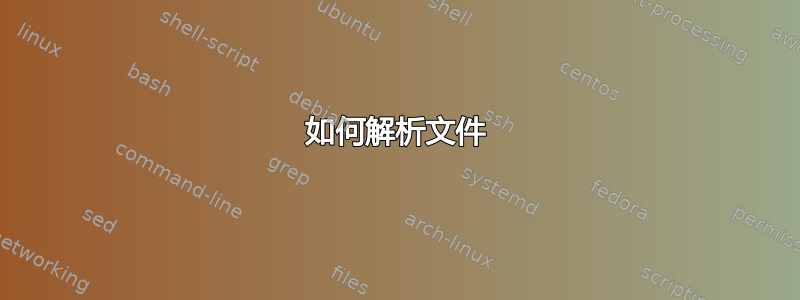
我有以下 file1.txt。我想要做的是将 value1 到 value7 并在一行中输出。将在单词“Start”和“End”之间扫描该值。如果标签/值丢失,输出将显示“NA”
请参阅下面想要的output.txt。
简而言之,我想复制 Start 和 End 之间的值并在一行中输出。如果值标签不存在,则该值将显示 NA。并连续扫描另一条记录的值(从开始到结束),直到找到 file1.txt。
文件1.txt
Start
label1 label2 label3 label4
value1 value2 value3 value4
label5
value5
label6 label7
value6 value7
End
Start
label1 label2 label4
valueA valueB valueD
label5
valueE
label6
valueF
End
Start
.
.
.
End
输出.txt
label1 label2 label3 label4 label5 label6 label7
value1 value2 value3 value4 value5 value6 value7
valueA valueB NA valueD valueE valueF NA
答案1
这个Python脚本应该做你想做的事:
#!/usr/bin/env python
# -*- encoding: ascii -*-
"""parse.py
Parses a custom-format data-file.
Processes the file first and then prints the results.
"""
import sys
# Read the data from the file
file = open(sys.argv[1], 'r')
# Initialize a dictionary to collect the values for each label
labels = {}
# Initialize a stack to keep track of block state
stack = []
# Initialize a counter to count the number of blocks
block = 0
# Process the file
line = file.readline()
while line:
# Remove white-space
line = line.strip()
# The stack should be empty when we start a new block
if line.lower() == "start":
if stack:
raise Exception("Invalid File Format: Bad Start")
else:
stack.append(line)
# Otherwise the bottom of the stack should be a "Start"
# When we reach the end of a block we empty the stack
# end increment the block counter
elif line.lower() == "end":
if stack[0].lower() != "start":
raise Exception("Invalid File Format: Bad End")
else:
block += 1
stack = []
# Other lines should come in consecutive label/value pairs
# i.e. a value row should follow a label row
elif line:
# If there are an odd number of data rows in the stack then
# the current row should be a value row - check that it matches
# the corresponding label row
if len(stack[1:])%2==1:
_labels = stack[-1].split()
_values = line.split()
# Verify that the label row and value row have the same number
# of columns
if len(_labels) == len(_values):
stack.append(line)
for label, value in zip(_labels, _values):
# Add new labels to the labels dictionary
if label not in labels:
labels[label] = {
"cols": len(label)
}
# Add the value for the current block
labels[label][block] = value
# Keep track of the longest value for each label
# so we can format the output later
if len(value) > labels[label]["cols"]:
labels[label]["cols"] = len(value)
else:
raise Exception("Invalid File Format: Label/Value Mismatch")
# If there are an even number of data rows in the stack then
# the current row should be a label row - append it to the stack
else:
stack.append(line)
# Read the next line
line = file.readline()
# Construct the header row
header = ""
for label in labels:
cols = labels[label]["cols"]
header += "{0: <{width}}".format(label, width=cols+1)
# Construct the data rows
rows = []
for i in range(0, block):
row = ""
for label in labels:
cols = labels[label]["cols"]
row += "{0: <{width}}".format(labels[label].get(i, "NA"), width=cols+1)
rows.append(row)
# Print the results
print(header)
for row in rows:
print(row)
你可以像这样运行它:
python parse.py file1.txt
它会对示例数据生成以下输出:
label1 label2 label3 label4 label5 label6 label7
value1 value2 value3 value4 value5 value6 value7
valueA valueB NA valueD valueE valueF NA


